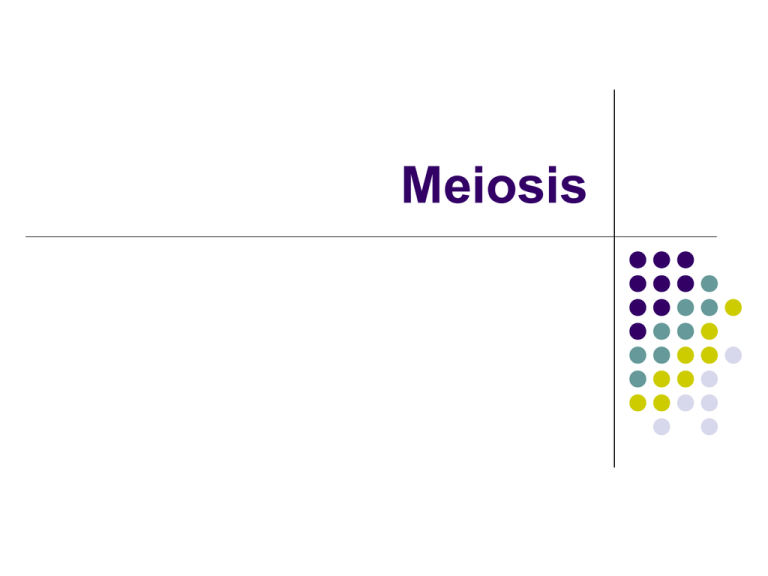Meiosis
advertisement

Meiosis Meiosis Somatic cells undergo Mitosis Gametes or sex cells undergo meiosis, resulting in a cell with half of the usual number of chromosomes (compared to a somatic cell). So we say that meiosis results in a halving of the chromosome number. Mitosis is just copying the DNA exactly as it is. Meiosis One chromosome duplication Two cellular divisions Yield : 4 haploid cells Mitosis One chromosome duplication One cellular division Yield : 2 diploid cells Meiosis I Homologous chromosomes line up at the medial line, then separate as whole chromosomes The sister chromatids Anaphase II separate in Anaphase II. Telophase II Crossing Over Prophase I A process, occurring during meiosis, in which, homologous chromosomes exchange reciprocal portions of themselves. Similar to shuffling of a deck of cards. Crossing Over Independent Assortment The random distribution of chromosome pairs during meiosis. 8 million different combinations of chromosomes lining up in Metaphase I. Meiosis generates diversity, mitosis does not Gamete production in Humans Spermatogonium produce sperm Half of the sperm carry an X chromosome Half of the sperm carry a Y chromosome Sperm ‘travel light’ (Chromosomes, mitochondria, flagella) Oogonium Produce one egg, three polar bodies All the cytoplasm is put into the egg All oogonia are present at birth Sperm Asexual Reproduction Not all reproduction involves two reproductive cells. Asexual reproduction Vegetative reproduction Regeneration Self-fertilization Hermaphrodites Fertilization restores the diploid condition





